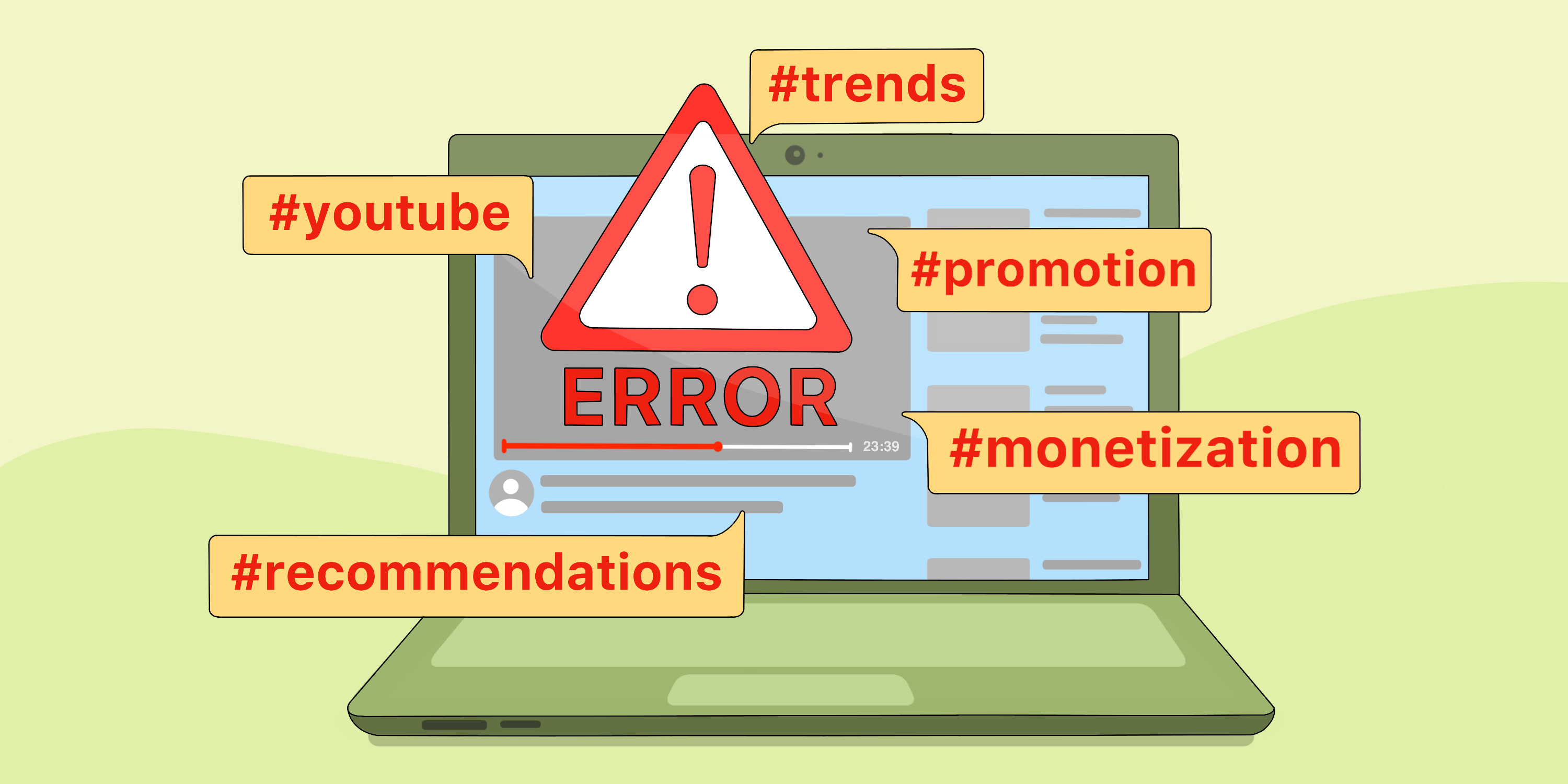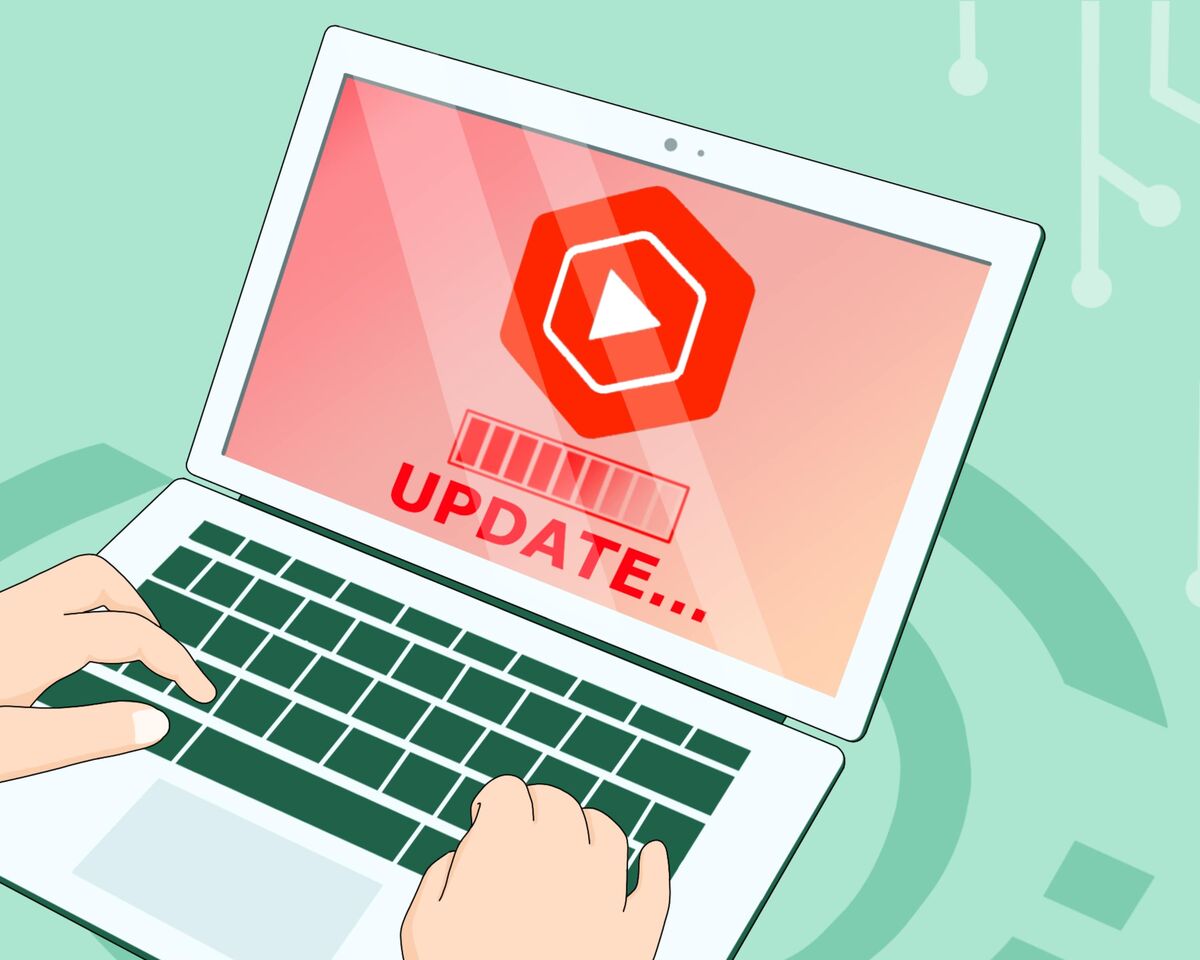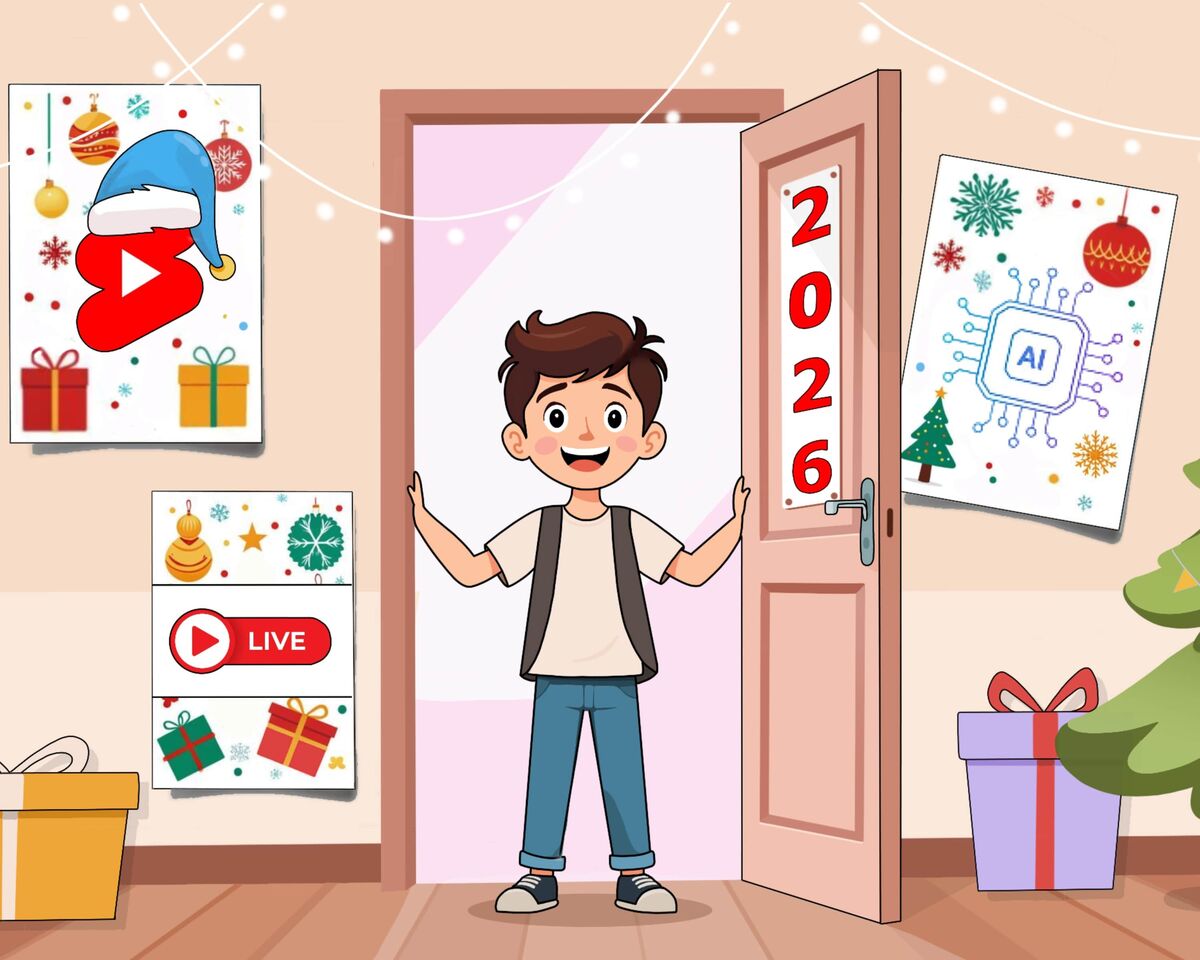Why you DON'T Need to Edit Your Videos on YouTube

You've probably wondered: why bother with video descriptions, tags, or hashtags? No one reads descriptions anyway, tags are only seen by the video creator, and everyone keeps using hashtags just because someone once said they were important.
Currently, video optimization on YouTube, including descriptions and tags, is not as impactful as it once was for driving search traffic. However, for beginners, gaining traction on YouTube remains nearly impossible without a well-crafted video description.
Is that really the case? Let's Investigate further.
What are tags, hashtags and keywords?
For most YouTube creators, tags are a mysterious field in the video settings where they’re prompted to enter some keywords.
Tags are located way down at the bottom, often collapsed, and only become visible when you expand the advanced settings.
As a result, many newcomers on YouTube don’t even notice this option.
More advanced creators often struggle with the question of what to do with tags, why YouTube created them, and whether they’re necessary at all.
If you check YouTube's official help documentation on the topic, it immediately provides a clear definition:
Overall, it’s clear. But let’s turn to Google to explore what the term "tags" means in a more general sense. It turns out that the word "tag" is not patented by YouTube; it's a broad term that refers to keywords related to a specific topic. Tags are used in any type of work where making information easier to find is important.
For example, when you write articles on a website and want them to appear in searches and attract an audience, both to the article and the site itself. Tags help your articles or videos rank higher in search results, making them more discoverable.
Keywords are used within sentences that follow logical structure, while tags are simply a collection of keywords, typically listed one after another, separated by commas. Although tags consist of keywords, the primary idea is that they are listed, often at the end of an article, to aid search engine algorithms rather than engage readers, who are unlikely to focus on a random assortment of words.
Another important term to understand for better content optimization is hashtags. The key difference between hashtags and regular keywords or tags is that hashtags are marked with a pound symbol (#). While hashtags were once vital for promotion on platforms like Instagram, they don’t hold the same level of importance on YouTube.
YouTube's official explanation of hashtags can be a bit vague, but to put it simply, by using hashtags in the video description or title, you help your videos appear on pages associated with those specific hashtags. This way, users can discover your content when they search or click on that hashtag on YouTube.
Videos on hashtag pages are also ranked similarly to search results, but beyond that, hashtags don’t significantly help with video promotion.
Now that you understand the basics and differences between tags, keywords, and hashtags, let’s address the fact that many creators have a lot of misinformation about these tools in their minds:
- Some creators have no idea what tags are and don’t fill out the tags field at all.
- Others believe they can write anything in the tags field, as long as the search terms are popular.
- Some put tags directly into the video description, simply filling it with a list of keywords separated by commas.
- And others confuse tags with hashtags, adding keywords with a "#" symbol everywhere, including in the tags field.
All of this reflects an incorrect approach to optimizing your content by using keywords.
But a question arises -
Do we need to use tags on Youtube or not?
To figure this out, let's look directly at YouTube's guidance on this matter. In the help section about adding tags to a video, YouTube clearly states that adding tags is not mandatory:
To verify this, let's refer to another article about the algorithms, or more accurately, about the content search and discovery system.
This article provides a comprehensive answer to the question "how do YouTube algorithms work," and in the section about how important tags are for video discovery, we are once again told that they are "not very" important.
It turns out that tags are largely ineffective and not worth your time, as they don't significantly impact performance.
And we could stop there. But instead of jumping to superficial conclusions, let’s dig deeper into the topic.
First, it’s curious that the article about adding tags still exists. Does this mean the platform is being somewhat misleading?
The answer is both yes and no. Tags are somewhat necessary but also not essential. A closer look at these articles reveals a specific recommendation: YouTube suggests adding tags when people frequently misspell queries related to your topic.
So, does adding tags make sense after all? Yes, they play a role in optimizing your content to appear in search results for various audience queries. However, the significance of tags is greatly overstated.
Many people mistakenly believe that tags are like magic words that will help their videos rank higher in search, but there’s no magic involved.
Unfortunately, creators often chase high optimization scores provided by the vidIQ extension, forgetting that these assessments are not entirely objective. But why?
The issue is that vidIQ assigns maximum points for using as many popular, high-demand keywords as possible in the title, description, and tag sections of the video.
How does proper optimization of YouTube videos work?
Let’s make this clear from the start: video optimization on YouTube is not the most effective tool for promotion.
Search recommendations will not boost your videos performance overnight. Search traffic provides slow but steady growth.
However, there is an advantage to search traffic: videos are ranked primarily based on good optimization work, meaning the use of relevant keywords in the video formatting, rather than relying on the number of views or the video's performance in the first few hours after upload.
This is also confirmed by YouTube in the help section about how algorithms work.
Yes, your video’s position in search results is determined not only by the presence of keywords in the video’s formatting but also by the content of the video itself and how accurately it matches the viewer’s query.
In other words, the more viewer query variations you describe in your video's formatting, and the more often people click on your video and watch it, the higher you'll be in search. And this is less influenced by the number of views or audience reactions in the first hours after the video's release.
Nevertheless, quality keyword development is in no way related to your video getting into recommendations.
However, it also doesn't prevent it from getting there, but increases the chances of the video growing slowly but surely and bringing in a new audience.
Our advice is this: when choosing between search optimization and great clickable formatting, such as an eye-catching thumbnail and a catchy title, prioritize the latter. These elements are crucial in getting your video recommended to viewers.
However, if you’re someone who likes to go the extra mile, we’ve prepared a few tips to help you find the right balance and avoid common pitfalls. Plus, keep in mind that optimization remains the most valuable tool for helping new channels gain traction on YouTube.
This is important to know if you are working with video optimization.
Let’s talk about beginners. Imagine this scenario: you’re starting a YouTube channel from scratch without asking friends or family to subscribe. That’s the right approach, but it also means you have no audience—zero subscribers and viewers. You upload your first video, and… nothing happens.
This makes sense because your video is just one of millions uploaded to YouTube daily. The algorithm doesn’t know what your video is about or who to show it to because no audience data has been collected yet. Without an initial audience, YouTube has no context for your content. That’s why it’s crucial to optimize your video, allowing the algorithm to analyze the metadata—such as the title, description, and tags—and present it to people who might be interested in the topic.
Yes, there are cases where a video goes viral with the first upload on a new channel, but unless we watched the creator closely, it’s impossible to pinpoint why—whether it was random luck, paid promotion, or something else. And if someone claims there’s a magic formula for success, don’t believe it. There isn’t one. The "magic" behind quick success often involves big budgets, professional teams, or sheer luck.
Now, returning to our initial discussion about video tags, let’s clarify their purpose. As mentioned, tags are mostly useful when viewers frequently misspell or use slang or abbreviated terms related to your video’s topic.
The second point to remember is that using irrelevant tags can harm your video’s chances of gaining traction.
If you throw random, irrelevant words into the tag field, like just adding popular topics and queries not related to your video, YouTube will lower your video in search rankings. It won’t be a drastic fall from the top of Everest, but it can definitely hurt your video.
Random, unrelated words confuse YouTube, and your video might be shown to the wrong audience. The viewer will open it, realize it’s not what they were looking for, and just close it, which will hurt your retention rate.
And YouTube, seeing this, will conclude that the video is bad, that the audience quickly drops off, and will reduce its visibility, missing the audience that could actually be interested in the topic.
This principle applies to every aspect of optimization, whether it’s the title, description, or even the almost insignificant but still somewhat relevant tags.
One more important point: tags should only be placed in the designated tag field. Avoid listing keywords separated by commas in the video description, as YouTube considers this kind of formatting as spam or deceptive behavior.
Also, put yourself in the shoes of the viewers who decided to check your description. This will absolutely turn them off.
Remember that even well-written tags in the tag field play the smallest role in promoting your content anywhere on YouTube.
The most important factors that influence your search ranking are the thumbnail, title, and video description, with thumbnails and titles being crucial for getting your content into recommendations.
There’s a subtle difference, but if you want to get into recommendations, it’s far more important to outshine other creators and capture maximum attention from the audience. Meanwhile, in search results, you need to be highly precise in matching the audience’s query and immediately presenting a solution.
The main role of a title is to attract an audience, so optimization is not that important. And frankly, a title stuffed with keywords looks clunky, overloaded, and unreadable. People, after all, are the ones who look at the title and decide whether to watch or not, and their clicks will promote the video.
However, completely ignoring optimization is also unwise. It’s best to include at least one keyword or phrase that reflects your video’s topic. Just don’t stuff the title with every keyword and query you can think of. It’s much more important to make it clickable and relevant to the video topic.
Here’s another tip—try to keep your title under 60 characters so that it displays fully and doesn’t look cluttered. Also, remember that thumbnails and titles work together to drive viewer clicks; you can’t create a great title and then neglect the thumbnail.
Additionally, trends within your niche significantly impact the success of your video title. Style trends in certain topics don’t just appear out of thin air; creators adopt them because they work.
For instance, it was once trendy in vlogs to create collages without bright accents and use simple, non-clickbait titles.
The next crucial aspect of optimization is the video description.
While you personally might not read it, it’s important not to judge based on your own habits. Many viewers find the description useful for various reasons, such as locating a recipe, finding important links, or reading the creator’s perspective on the video’s topic. Some even check the description before deciding whether to watch the video.
This only touches on the aesthetic aspect of the description that influences viewers, but let’s focus on what matters to YouTube.
The platform’s algorithms scan descriptions for relevant keywords, which helps determine where and to whom your videos should be shown.
This is especially important for new channels that lack audience analytics.
However, beginners often mistakenly believe they can ignore the description like established creators do. They forget they are not yet popular and don’t have a loyal audience base.
What’s important to know? The video description does not display in full—only the first two lines are visible in search results and the player.
YouTube pays the most attention to the first few lines, which means they should contain the highest number of keywords and queries.
The takeaway is: use this space wisely, and don't waste it on unnecessary information.
- links
- repeating the title
- hashtags.
As for the latter (hashtags), we should remind you that three of them will still appear at the top, regardless of where you place them in the description.
In the description, just like in the title, it’s important to include relevant keywords and phrases. However, since fewer people read descriptions, you can afford to add as many useful keywords as possible. Don’t hesitate to place them at the beginning, but remember to keep the sentences logical—after all, people do read them, and as we know, simply dumping tags can lead to video demotion due to spam.
To include even more keywords in various forms, provide a brief summary of the video’s content in the description: you can do it in paragraphs, bullet points, or both.
Another useful tip is to add some information about your channel and yourself in the description. This has two benefits: first, more keywords in the description (which we all love), and second, it gives viewers a chance to get to know the creator and their channel while watching the video, which might encourage them to subscribe immediately.
If viewers have to go to your channel to confirm that the video they found isn’t just a random topic in your catalog, and that your videos all follow a consistent theme, most people will drop off at this stage.
And now we move on to a very important point: timecodes.

Timecodes not only help viewers find the necessary moments in a video and enhance the timeline visually, but they are also a powerful tool for search optimization. This power comes from the fact that, when properly optimized, timestamps can rank well for viewer queries both on YouTube and Google.
Another useful element in the description is including links to related videos on your channel.
First, you can use relevant keywords to present them, adding more optimization points. Second, this currently looks quite appealing on YouTube. And third, it increases the chances of one viewer watching more of your content.
Now, let’s talk about a controversial aspect of descriptions—links to your other social media accounts.
This issue is twofold because YouTube prefers creators to keep viewers on the platform for as long as possible. If people are leaving YouTube through your links, it’s understandable that the platform might not favor that behavior. While this is not an absolute rule, it’s well known that YouTube strongly prioritizes keeping viewers engaged for as long as possible, so it’s worth considering this factor.
And one more thing about hashtags: if you decide to use them, keep in mind that there should be no more than 60 hashtags in the description; otherwise, YouTube will not consider any of them.
Hashtags are written with a hash sign (#), with all words merged into a single hashtag, and each hashtag separated by a space. Remember, this format is only used in the video description, not in the tags field.

In conclusion, we’ve determined that the key aspects of promotion are definitely not tags or hashtags. When it comes to optimization, the focus should be on video titles and descriptions. For effective growth, prioritize understanding viewer interests before focusing on optimization. Ultimately, what captures viewers’ attention is engaging, high-quality content. Good luck!




